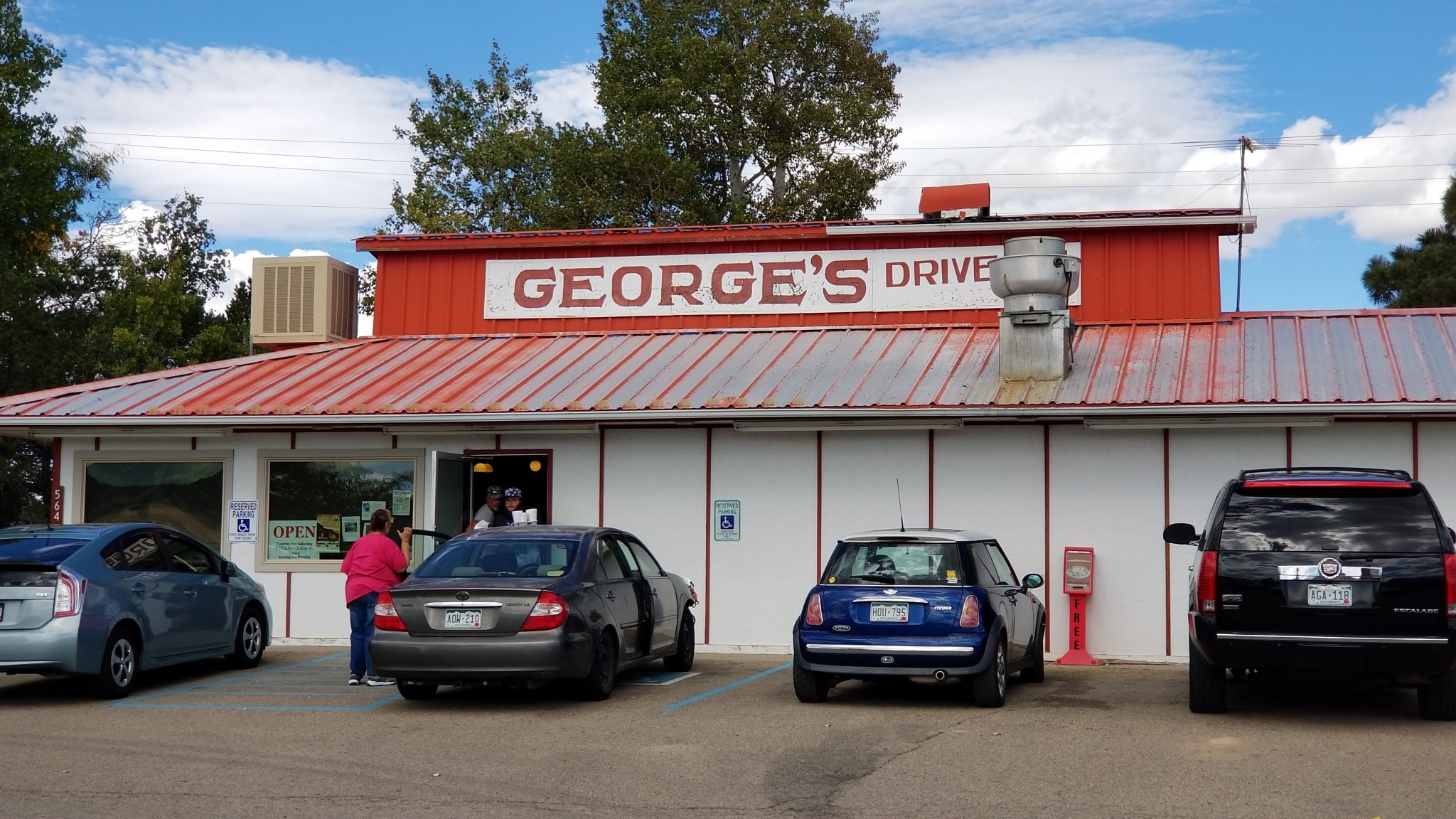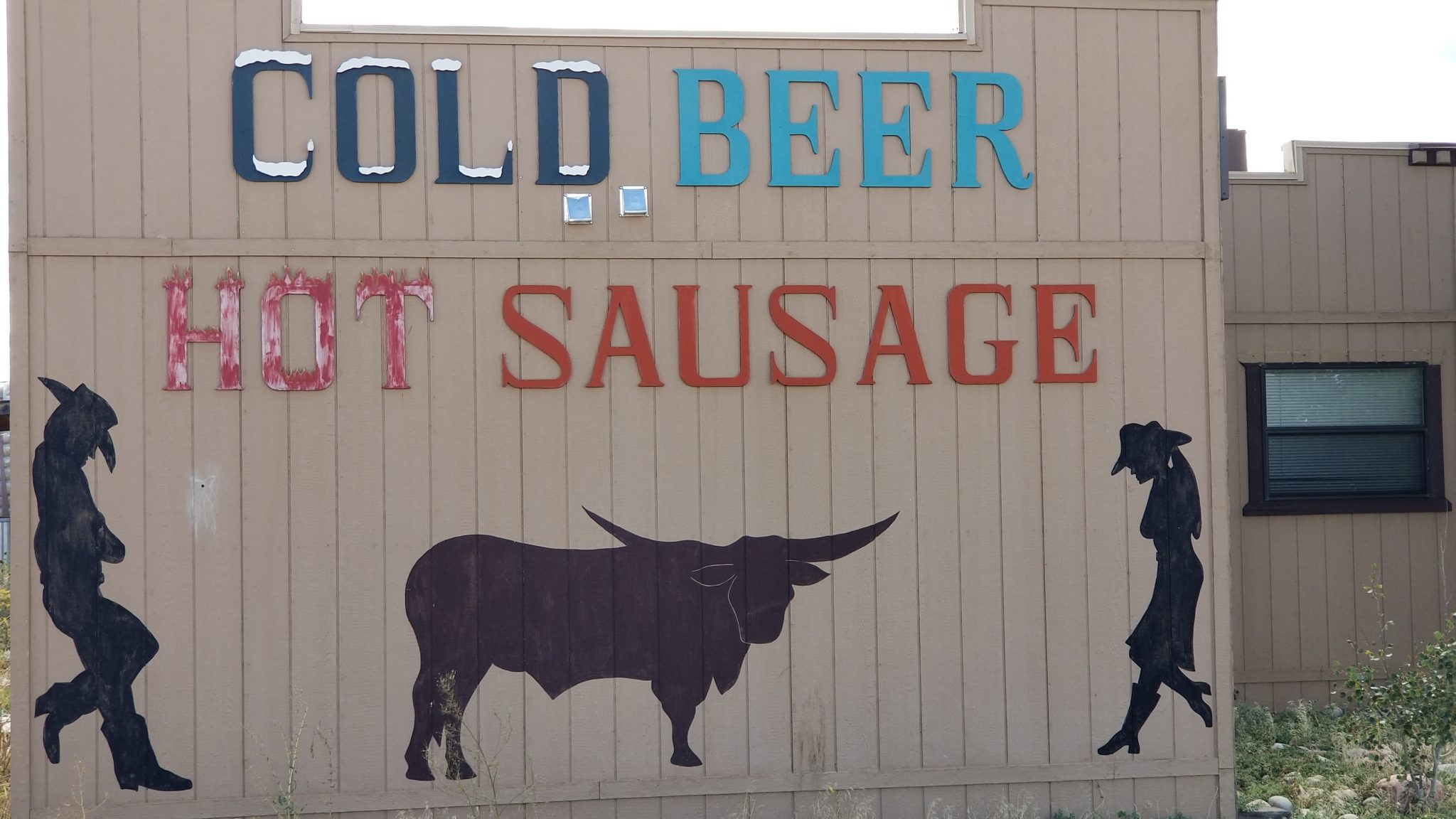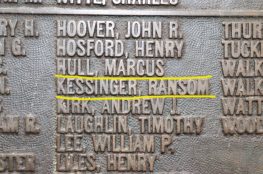As my journey began, my primary concern was that the America that I knew back in the day was very different from the America that is today. As I stated in my introduction to this blog, “Like Steinbeck, I have lost touch with America. Frankly, the America I love, and have served with a stint in the military and as an elected official, is different from the country I knew as a young man.” The implication, of course, is that today’s America is somehow worse than yesterday’s America.
Teddie and I just came from having lunch at George’s Drive-in. Now we were getting back on the highway. After eating a great hamburger and some onion rings, Teddie and I are ready to get back on the road. There's a middle-aged black man sitting along the side of the road, on the shoulder, just before the entrance ramp to Highway 25 South; we are about as far south in Colorado as one can go, just north of the Santa Fe Trail. He sits in a blue camp chair. Lined up next to him are cardboard boxes filled with stuff. Presumably, his stuff. There is a large suit case with wheels, the handle fully deployed. He just sits there. Not trying to thumb a ride. Clearly homeless. Not sure what he’s expecting.
There was plenty of that to see back in the 1970’s when I was hitchhiking across America. Back then we called him a sidewalk camper, a bum, indigent, hopeless; not homeless. That was implied. That term of art came along later. I’m sure the stories of the past’s homeless, although not exactly the same, were similar to those of today. It involved untreated mental illness back then and mental illness untreated now. I wonder what this poor black man’s story is, as he sits there yawning, scratching, disheveled, waiting for something. What? Not having any place to go, he keeps a 5-gallon plastic paint bucket immediately in front of him filled with stuff. As I drive by, I realize he's got a Rasta look about him; his hair is matted against his head. I'm not sure he even knows what's up. How did he get all that crap out there in the first place?
Back in the day, everyone inside the restaurant would have looked the same. The waitresses, the cooks, the owner, everyone. That includes the clientele. They would have sported a variation of western style, most with a worn patina of having been washed over and over, but still wearable. I remember being looked at with great suspicion, because I had long hair. Back then, we always had to worry about some of the bully boys deciding to give us a hard time. We deserved a hard time, because we looked different. Our look said we were from the north which made it even worse. Back then, the schism in America caused by the Vietnam War, the civil rights movement, and widespread poverty throughout America caused a great cleavage in this nation. The late 1960s, and most of the 1970s, were about trying to figure out which America we wanted to be. It was much worse then. Today, I am convinced, the division of America is along political class lines. Those with an economic stake are at odds and are pushing and pulling for preeminence. I don't think it reaches down into the rest of the classes. At least not yet. Back then – everyone picked sides.
Today in 2018, I waited for my to-go order in Georges Drive-in, standing by the front desk. I found myself watching the fry cook work his magic. He is a kid of Arabic descent, dark skinned, big thick beard, gold earrings in each ear, with his hair pulled back and he is wearing his ballcap on backwards. The assistant cook looks like some skinny Irish kid, also with a beard, but his is scraggly and he, too, wears his hat on backwards. The owner works right alongside his Mexican American waitresses. He is of undetermined ethnic background. The customers span the broad spectrum of today’s America. Some are wearing blue jeans and western shirts and old straw hats that used to be white before they became covered with smudges from dirty hands scooping them off a hat stand or a table in their kitchen at home. One white fellow has his head shaved closely on each side and up the back of his neck. He looks like Taras Bulba the Cossack, fresh from the Eurasian steppes. His long jet-black ponytail hangs from the crown of his head, flowing down his back. He is holding hands with a young Mexican American woman and he is wearing a black AC/DC t-shirt. The owner knew him by name.
I look different, too. I'm an old white guy with a beard and a ponytail wearing a pair of Ariat boots and blue jeans. While I wait for my order, I hold the door open for a Native American woman, slightly overweight and smelling of cigarettes, so she could come into the diner. She stepped into the restaurant, turned to the right, saw the owner and asked for her take out order. Her man trailed behind her through the door into the restaurant. He was noticeably thin, a white man, probably her husband, wearing a trucker’s cap that needed a wash.
None of these people would have mixed in the same restaurant back in the 1960s or the 1970s. Let alone sleep with each other. There were restaurants that catered to each group of people back then. People clung to their own. I remember Doug Riddle, my high school friend who is half Sioux Indian, taking me to a Mexican restaurant in Southern California back in the 1970s. The only reason we were in that restaurant was because there was a power outage in town. All the white restaurants were closed. He took me to this Mexican restaurant and ordered a plate of jalapeno peppers and two warm beers. The coolers had been out for hours. I never had jalapeno pepper before. Never even heard of them. He knew that. He told me that they were like pepperoncinis. The mild Italian pepper. So, much to his amusement, he made me eat one and then he handed me a warm beer to wash it down with - talk about a four-alarm fire. Doug belly laughed with all the old Mexican dudes, wearing their white straw western hats, sitting on stools at the bar. They cackled while watching this poor white boy dying right before their brown eyes, barely visible above their cheeks, wind worn and wrinkled. I was the only white person in the restaurant. I assume the rest of the white people in town decided they would rather not eat out if that meant they had to go to this restaurant. They would just wait until the power got turned back on and go to restaurants that catered to their kind.
Back then, the Mexican-American waitresses were obsequious to a white man. All they wanted to do was to make sure you were happy and make damned sure that they did not piss you off. Today, my waitress called me ‘Hun’ and move me out of the way. Twice. I hovered by the dish pan sitting on a wheeled cart that the servers put the dirty dishes into; and just as quickly, the dishes were picked up by an old white man covered with tattoos. He came out of the kitchen, from the back, and he grabbed the tray, replacing it with an empty tub, and taking the full one back into the kitchen, presumably to wash. She'd say, “You're okay, Hun,” and then she moved me again.
Looking at the mixed crowd in George’s Drive-in, by my way of thinking, what I saw today is a positive development. A good thing. Things are going to be all right, just fine; however, we must not let the sickness of the political classes at the top seep down to bulk of the population. The owner, a man of small stature wearing a long-sleeve shirt and a pair of chinos, called out the names of the truckers as well as calling out the names of the Cowboys. He knew everybody. They were there for the same thing. They just wanted some of George's food. They were there for the jumbo burger, the onion rings, or the enchiladas. Everybody wanted the special homemade pies after they ate their meals. Today’s special, handwritten on a whiteboard, was homemade coconut cream and homemade peach pie. Fortunately, I dodged the desert bullet. It didn’t matter if the neighbor in the booth behind one was a different color, a different religion, or of a different ethnicity. It did not matter if he wore biker boots or cowboy boots or Birkenstocks. If this is the future for America, sign me up! I feel so optimistic. Just as long as the crap that is making our political caste so sick does not shake out from the top and seep all the way down to the bottom, we will be OK. I am not Pollyannaish. I know that the divisions at the top may rent this country all the way to the bottom. If that happens, like it did in the 1960’s and the 1970’s, there will be hell to pay for being different; different, that is, as defined by the winners. In the meantime, at George’s Drive-In, I felt like saying, “Let’s get this party started.”
Teddie and I drove past Rasta man, got onto the highway and turned to access a road to take us towards Texas. There was a young white couple in t-shirts and wearing shorts at the top of the exit ramp, standing there holding a cardboard sign with a peace sign on it and the words ‘love’ written on it. I rolled down my window to ask where they were going. She said, “We’re not going anywhere. We’re just wishing you peace and love.” How about that? Back at you.




